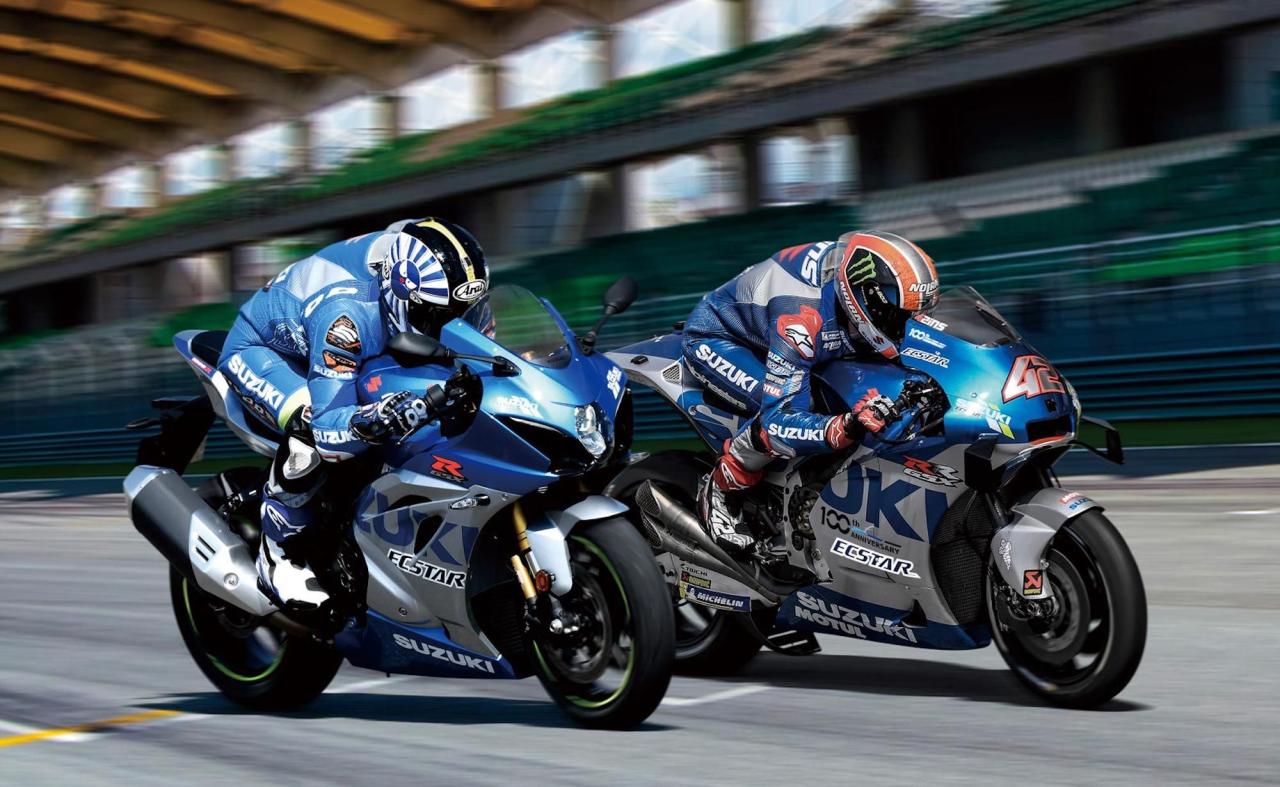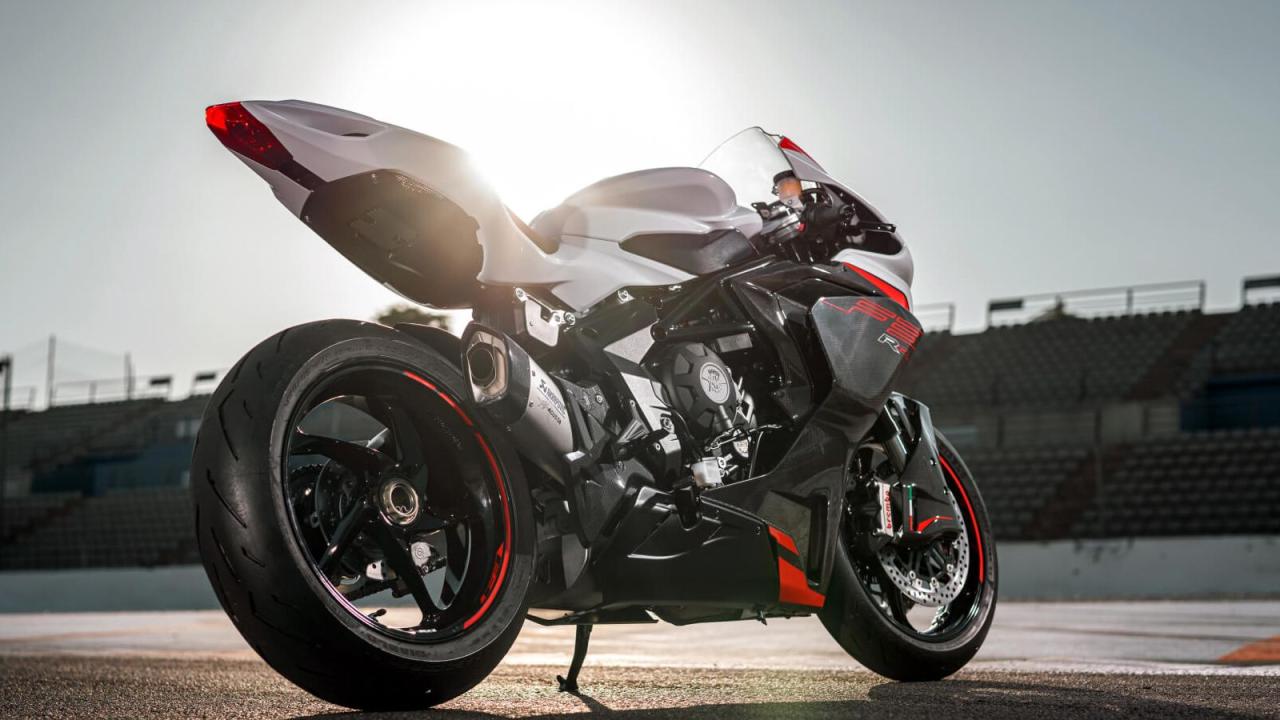Sport bike reviews and comparisons open up a world of possibilities for enthusiasts looking to dive deep into the realm of high-performance two-wheelers. From dissecting the latest models to exploring the nuances of speed and handling, this guide promises to deliver a comprehensive look at what sets each sport bike apart in the market.
As we delve into the intricacies of each model, prepare to be captivated by the wealth of information that awaits, guiding you towards making an informed decision when choosing your next adrenaline-pumping ride.
Introduction to Sport Bike Reviews and Comparisons

Sport bikes are high-performance motorcycles designed for speed, agility, and cornering on paved roads. They are known for their sleek, aerodynamic designs, powerful engines, and responsive handling, making them popular among motorcycle enthusiasts and adrenaline junkies.Before purchasing a sport bike, it is crucial to read reviews and comparisons to make an informed decision.
Reviews provide insights into the performance, comfort, and overall experience of riding a particular model, while comparisons help you evaluate different options side by side to find the best fit for your needs and preferences.Thorough research through reviews and comparisons can save you time and money in the long run.
By understanding the pros and cons of each sport bike model, you can make a well-informed decision that aligns with your riding style, skill level, and budget.
Factors to Consider in Sport Bike Reviews
When looking at sport bike reviews, there are several key factors to consider that can greatly impact the overall performance and riding experience. These factors include speed, handling, braking, ergonomics, comfort, technology, and features.
Performance Aspects
- Speed: One of the most crucial aspects to evaluate in a sport bike review is its speed capabilities. This includes acceleration, top speed, and overall power delivery.
- Handling: A sport bike's handling can make a significant difference in how it performs on the road or track. Factors such as cornering ability, stability, and responsiveness should be carefully assessed.
- Braking: Effective braking is essential for safety and control. Reviews should cover the braking system's performance, including the feel of the brakes, stopping power, and ABS functionality.
Ergonomics and Comfort
- Ergonomics: The ergonomic design of a sport bike can impact rider comfort and fatigue during long rides. Factors like seat height, handlebar position, and footpeg placement should be considered in a review.
- Comfort: Comfort features such as seat padding, suspension quality, and wind protection can greatly enhance the overall riding experience. A review should address how comfortable the bike is for different types of riders.
Technology and Features
- Modern sport bikes are equipped with advanced technology and features that can improve performance and safety. Reviews should highlight features like ride modes, traction control, quick shifters, and electronic suspension systems.
- Connectivity options, such as Bluetooth integration and navigation systems, are also becoming more common in sport bikes and can add convenience for riders.
Comparison Methodologies
When comparing sport bikes, it is essential to follow effective methodologies to make an informed decision. Evaluating specifications, performance data, and personal experiences through test rides are crucial aspects of the comparison process.
Evaluating Specifications and Performance Data
- Compare key specifications such as engine displacement, horsepower, torque, weight, and dimensions to understand the capabilities of each bike.
- Look at performance data like acceleration times, top speed, braking distance, and handling characteristics to determine the overall performance of the sport bikes.
- Consider additional features such as electronic aids, suspension systems, and braking technology that can impact the bike's performance and rider experience.
Importance of Test Rides and Personal Experience
- Schedule test rides on different sport bikes to get a feel for how each bike handles, accelerates, brakes, and corners.
- Pay attention to ergonomics, comfort, and rider position during test rides to assess long-term rideability and suitability for your riding style.
- Personal experiences during test rides can provide valuable insights that may not be evident from specifications alone, helping you choose the best sport bike for your needs.
Popular Sport Bike Models

When it comes to sport bikes, there are several popular models in the market that enthusiasts rave about. These models are known for their cutting-edge technology, sleek designs, and impressive performance on the road. Let's take a closer look at some of the top sport bike models available.
Yamaha YZF-R1
The Yamaha YZF-R1 is a favorite among sport bike riders for its powerful inline-four engine, advanced electronics, and agile handling. It offers a perfect balance of performance and comfort, making it a great choice for both track days and daily commutes.
Suzuki GSX-R1000
The Suzuki GSX-R1000 is another top contender in the sport bike category, known for its legendary reputation on the racetrack. With a lightweight chassis, powerful engine, and race-inspired design, the GSX-R1000 delivers an exhilarating riding experience that appeals to adrenaline junkies.
Kawasaki Ninja ZX-10R
The Kawasaki Ninja ZX-10R is a powerhouse in the sport bike segment, boasting a high-performance engine, advanced suspension system, and aerodynamic bodywork. It's a top choice for riders looking for speed, precision, and agility in a sport bike.
Honda CBR1000RR
The Honda CBR1000RR is a versatile sport bike that offers a perfect blend of performance and comfort. With a smooth inline-four engine, sophisticated electronics, and comfortable riding position, the CBR1000RR is a popular choice for riders who enjoy long rides as well as spirited sprints.Each of these popular sport bike models has its own set of pros and cons, catering to different preferences and riding styles
Riders can choose based on factors such as engine performance, handling, comfort, and design aesthetics to find the perfect sport bike that suits their needs and preferences.
User Reviews and Feedback

User reviews play a crucial role in helping potential buyers make informed decisions when it comes to purchasing sport bikes. Real-world feedback from actual users provides valuable insights into the performance, reliability, and overall satisfaction with a particular model.
Value of User Reviews
User reviews offer a firsthand account of the riding experience, maintenance issues, and any potential drawbacks of a sport bike. This information can help prospective buyers understand what to expect in terms of performance and practicality.
- Users often highlight specific features that they appreciate or dislike, giving a more detailed perspective compared to professional reviews.
- Real-world feedback can reveal common problems or concerns that may not be apparent in manufacturer specifications.
- User reviews can also provide tips and recommendations for maximizing the enjoyment and longevity of a sport bike.
Influence on Purchasing Decisions
User feedback can heavily influence the decision-making process when choosing a sport bike to purchase. Positive reviews can instill confidence in a buyer, while negative reviews may steer them away from a particular model.
- Word-of-mouth recommendations from fellow riders can carry significant weight in the decision-making process.
- Consistent feedback about a specific issue or flaw can deter buyers from investing in a particular sport bike.
- Personal anecdotes and experiences shared in user reviews can help buyers envision themselves owning and riding a specific model.
Reliability of User Reviews
While user reviews are valuable sources of information, it is essential to approach them with a critical eye. Not all reviews may be genuine or unbiased, so it's important to consider multiple opinions before forming a conclusion about a sport bike.
- Look for patterns or recurring themes in user feedback to determine the credibility of the information provided.
- Consider the source of the review and the reviewer's level of expertise or experience with sport bikes.
- Balance user reviews with professional evaluations to gain a comprehensive understanding of a sport bike's performance and quality.
Future Trends in Sport Bike Design
As technology advances and consumer preferences evolve, the world of sport bike design is constantly changing. Manufacturers are always looking for ways to innovate and stay ahead of the curve. Let's explore some of the future trends in sport bike design.
Electric Powertrains Integration
With the increasing focus on sustainability and environmental concerns, electric powertrains are expected to play a significant role in the future of sport bike design. Manufacturers are investing heavily in electric bike technology to reduce emissions and offer a cleaner alternative to traditional gas-powered bikes.
Electric sport bikes are becoming more popular due to their instant torque delivery and low maintenance requirements.
Advanced Rider Assistance Systems
Another emerging trend in sport bike design is the integration of advanced rider assistance systems. Features such as traction control, anti-lock braking systems, and electronic suspension are becoming standard in modern sport bikes. These systems enhance safety and improve the overall riding experience by providing better control and stability in various road conditions.
Materials Innovation
Advancements in materials science are also shaping the future of sport bike design. Lightweight and durable materials such as carbon fiber, titanium, and aluminum are being used to improve performance and reduce weight. These materials offer a perfect balance between strength and agility, allowing manufacturers to create faster and more agile sport bikes.
Aerodynamic Enhancements
Aerodynamics play a crucial role in sport bike performance, and manufacturers are constantly exploring ways to improve airflow and reduce drag. Future sport bikes are expected to feature innovative aerodynamic designs, including streamlined fairings, wind-tunnel-tested bodywork, and integrated wings for improved stability at high speeds.
These enhancements not only enhance performance but also contribute to the overall aesthetics of the bike.
Customization and Personalization
In the future, sport bike enthusiasts can expect more options for customization and personalization. Manufacturers are offering a wide range of accessories, paint schemes, and performance upgrades to allow riders to tailor their bikes to their preferences. Customization options will continue to expand, allowing riders to create unique and personalized sport bikes that reflect their individual style and personality.
Conclusion
In conclusion, the world of sport bike reviews and comparisons is a dynamic landscape filled with endless possibilities for exploration. By arming yourself with the knowledge gleaned from this guide, you'll be well-equipped to navigate the fast-paced world of high-performance motorcycles with confidence and precision.
Question Bank
What are the key features of sport bikes?
Sport bikes are known for their lightweight frames, powerful engines, and aggressive riding positions designed for speed and performance.
Why is it important to read reviews and comparisons before buying a sport bike?
Reading reviews helps you understand the strengths and weaknesses of different models, ensuring you make an informed decision based on your specific needs.
How can I effectively compare sport bikes?
To compare sport bikes effectively, focus on factors like speed, handling, comfort, and technology features to determine which model best suits your riding style.













